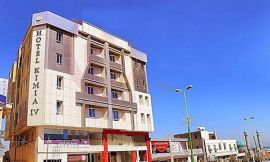
General Information
Qeshm is an Iranian island in the Strait of Hormuz, separated from the mainland by the Clarence Strait/Khuran in the Persian Gulf. It is the largest island in Iran.
Qeshm Island is located a few kilometers off the southern coast of Iran (Persian Gulf), opposite the port cities of Bandar Abbas and Bandar Khamir. The island, which hosts a 300-square-kilometre (116-square-mile) free zone jurisdiction, is 135 km long, and lies strategically in the Strait of Hormuz, just 60 kilometres (37 miles) from the Omani port of Khasab, and about 180 kilometres (112 miles) from the UAE Port Rashid.
The average temperature on the island is approximately 27 °C (81 °F). The warmest months are June through August, and the coldest from October to January. The average rainfall is 183.2 mm
The island comprises 59 towns and villages and the population was 117,774 at the 2011 Census. The local population is involved in fishing, dhow construction, trade and services. An additional 30,000 are involved in administrative and industrial workforce and students.
Get in and around
There are flights from major cities like Tehran, Shiraz, Isfahan and Mashhad to Qeshm International Airport.
You can use taxi, however the easiest way to travel is via a hired car and its not expencive. The simplest way is to get on a speedboat at Bandar Abbas main harbour.
Qeshm and its mainland port at Bandar Abbas are linked to all major cities in Iran by bus, both VIP and Normal.
There are daily train to Bandar Abbas from Tehran. Then you can go to the Qeshm Island by boat.
Top sights & Things to do
When to visit?
The most popular time to travel is during the autumn and winter (Nov–Feb). Qeshm's climate is a desert one. There is virtually no rainfall during the year in Qeshm. In Qeshm, the average annual temperature is 27.1 °C. About 140 mm of precipitation falls annually. Precipitation is the lowest in June, with an average of 0 mm. The greatest amount of precipitation occurs in January, with an average of 42 mm. At an average temperature of 34.0 °C, July is the hottest month of the year. The lowest average temperatures in the year occur in January, when it is around 18.5 °C.
| Jan | Feb | Mar | Apr | May | Jun | Jul | Aug | Sep | Oct | Nov | Dec | |
| High/Low temperatures |
23°
13°
|
24°
15°
|
28°
18°
|
31°
21°
|
35°
25°
|
37°
28°
|
38°
30°
|
37°
30°
|
37°
28°
|
35°
25°
|
30°
19°
|
25°
15°
|
|---|---|---|---|---|---|---|---|---|---|---|---|---|
| Chance of precipitation |
9%
|
7%
|
9%
|
4%
|
1%
|
1%
|
0%
|
0%
|
0%
|
1%
|
3%
|
8%
|







